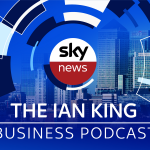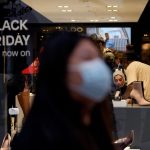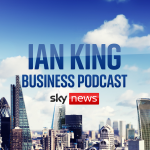Throughout the pandemic, the relatively low unemployment numbers were often reported behind a series of caveats.
“If it weren’t for the furlough scheme the numbers would be far worse”.
“Once the furlough scheme is over, there could well be a steep cliff edge”
And so on.
Dire forecasts about severe leaps in joblessness were no doubt behind a series of extensions to the government’s iconic scheme.
But the Coronavirus Job Retention Scheme did come to an end, after 17 months, on 30 September.
The payroll data for the month of October is one of the first insights into whether it achieved its stated aims; to save viable jobs and prevent mass unemployment.
Furlough scheme’s end led to ‘small’ number of job losses as payrolled employment soars
M&S joins clothing rental revolution through Hirestreet trial
Bank of England chief: I’m uneasy about inflation but we are a long way from the 1970s
In short, did it work?
Well, based on these numbers the answer appears to be yes.
The number of payrolled employees actually rose by 160,000 between September and October, that’s despite the fact there were some 1.1 million people still on furlough as the scheme drew to a close.
The Office for National Statistics (ONS) has warned that this alone may not capture all people let go at the end of furlough as many may still be working through their notice periods, for instance, and we will also need to wait a month for the official unemployment rate for October.
Please use Chrome browser for a more accessible video player
But these numbers are still good news and were enough for the chancellor to proclaim the “extraordinary success” of his scheme.
The reality is that employers have already been contributing significantly to the wages of furloughed employees as the scheme began to taper off in August and September.
The feeling is that most would have only opted to do this if there was a realistic chance of these people being kept on.
Data from the think tank Resolution Foundation supports this. Survey results published this week found that 88% of respondents who were furloughed in September were in work by October.
A similar survey of employers by the ONS found that 87% of people still on furlough at the end returned to work, with 3% made permanently redundant and 3% voluntarily leaving their roles.
Please use Chrome browser for a more accessible video player
More broadly unemployment has consistently been kept below some of the more dire predictions.
In the early stages of the crisis some warned it could peak at as high as 11%.
In January this year, the Office for Budget Responsibility said it would peak at 7.5%, but that has been repeatedly revised down, last month to just 5.2%.
There is no doubt that hundreds of thousands of people have lost jobs in the 19 months since the pandemic hit. Indeed, the Resolution Foundation estimates that some 136,000 will have been let go at the end of the furlough alone.
The positive general trend won’t be much comfort to those facing personal crises or to hard hit sectors like travel and aviation where the recovery is still faltering.
And it’s important to remember that unemployment is just one measure of the health of the economy and the workforce.
While an unemployment crisis may have been averted, there is still a significant vacancies crisis continuing to grip many sectors as a result of the economy getting back in gear at a time when post-Brexit immigration rules prevent employers hiring cheap labour from abroad.
For the third month in a row vacancies have reached record levels and are well over one million.
The reality is that while this persists and while businesses continue to grapple with an ongoing supply chain crisis, growth will be affected and full economic recovery will continue to be difficult.
The furlough scheme may well have averted the disaster of mass unemployment which could have stung millions of families as well as the economy, but it was an emergency measure, not a strategy for rebuilding, and on that, the hard work continues.






















